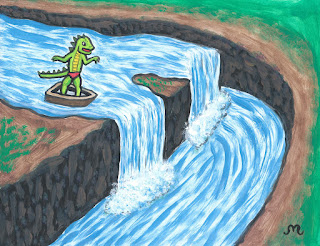What Happened To All The Radiation From Hiroshima?
Today, the city of Hiroshima is bustling with population of
over two million. But shouldn't Hiroshima be uninhabitable with all the
radiation that was released from the atomic bomb in 1945? Something doesn't add
up.
Nuclear detonations release energy by overpressure (blast), thermal
radiation (heat) and ionizing radiation (radioactivity). Roughly 50% of the energy released is
distributed as blast force, 35% as heat, and the remaining 15% as radioactivity.
The adverse impacts of blast and heat is felt right away, while the impact of
radioactivity is longer term.
The atomic bomb that exploded over Hiroshima was detonated
about 2000 feet above the ground, with most of the immediate casualties and
property damage caused by the blast force and the heat. The explosion resulted in a
massive fire ball which burnt or vaporized a big chunk of the residual
radioactive material. Had the bomb been
exploded on the ground instead of high up in the air, it would have left far
more radioactive dust and debris.
Nature compounded the city’s misery with a powerful typhoon on
September 17th, 1945, about a month after the bomb was dropped. Ironically, this typhoon washed away some of
the residual radiation into the sea.
The remaining radioactive contamination decayed quickly and
within few months, Hiroshima became an inhabitable place again.
References:
http://www.nukefix.org/weapon.html



Comments
Post a Comment